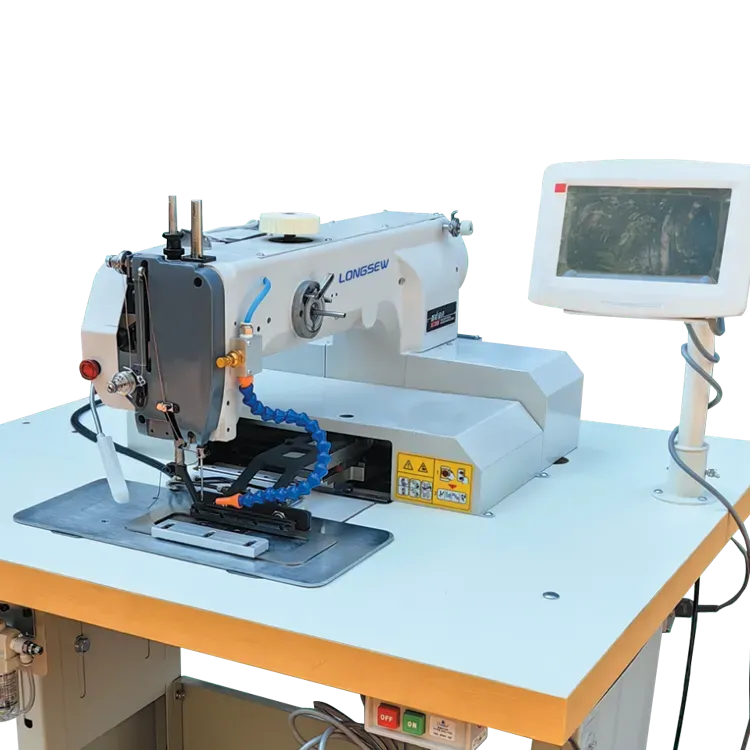Choosing the Right Needle for Heavy-Duty Thread in Sewing Machines
Choosing the Right Sewing Machine Needle for Thick Thread
When it comes to sewing, the choice of needle can significantly impact the outcome of your project, especially when working with thick threads. Whether you are sewing denim, upholstery fabric, or crafting heavy quilts, using the right sewing machine needle is crucial for achieving clean, precise stitches. This article will guide you through the importance of selecting the appropriate needle for thick thread and the various options available.
Understanding Needle Sizes and Types
Sewing machine needles come in various sizes and types, each designed for specific tasks. The size of the needle is denoted by a number, typically ranging from 60/8 (fine) to 110/18 (very heavy). When using thick thread, it is advisable to select a larger needle size, such as 90/14 or 100/16, which provides a larger eye to accommodate the thicker thread without causing tension issues or fabric damage.
Besides size, the type of needle is equally important. For thick threads, a heavy-duty needle, often labeled as “Jeans” or “Denim” needle, is ideal. These needles have a robust shaft and a sharp point that can penetrate dense fabrics like denim and canvas without breaking or bending. Similarly, a “Topstitch” needle, which has a larger eye and a wider groove, allows for smoother passage of thicker threads, ensuring that the stitches are consistent and preventing skipped stitches.
The Role of Thread Thickness
Thick threads are often used for specific projects where strength and durability are required, such as in outdoor gear or heavy quilts. Choosing the right needle ensures that the thicker thread can pass through the fabric without causing snags or misalignments. The thread thickness affects not only how easy it is to sew but also the appearance of the finished product. Thick thread can give a distinct, sturdy look to seams, making it popular for decorative stitches and topstitching.
Compatibility with Fabric
Another critical factor to consider is the compatibility of both the needle and thread with the fabric. For example, when sewing heavy fabrics like canvas or leather, a needle designed for those materials is essential. A leather needle, with its wedge-shaped point, easily penetrates tough fabrics, while ensuring that the thread lies flat within the seam. Using the wrong type of needle can lead to damaged fabric or broken needles.
sewing machine needle for thick thread

Tips for Effective Sewing with Thick Thread
1. Test First Always conduct a test stitch on a scrap piece of fabric before starting your project. This step will help you adjust tension settings and verify that your needle and thread combination works harmoniously.
2. Adjust Tension Thick threads often require adjustments to the upper and bobbin tension on your sewing machine. Lowering the upper tension or increasing the bobbin tension can lead to better results and smoother stitching.
3. Use the Right Presser Foot Consider using a walking foot or a roller foot. These presser feet help feed thick fabrics through the machine evenly, preventing puckering or shifting during the sewing process.
4. Increase Stitch Length When using thick threads, a longer stitch length can enhance both the appearance and strength of your seams. This adjustment reduces bulk and allows the thread to lay more evenly across the fabric.
5. Keep Your Machine Clean Thick threads can produce more lint and debris. Regularly cleaning your sewing machine will keep it functioning optimally and reduce the risk of thread jams.
Conclusion
Selecting the right sewing machine needle for thick thread is vital for achieving quality results in your sewing projects. By understanding the significance of needle size and type, considering the compatibility with fabric, and following best practices, you can enhance your sewing experience. Whether you’re a seasoned sewer or a novice, the right needle and thread combination will ensure your creations are durable, professional-looking, and a joy to make. Happy sewing!
-
Boost Production Efficiency with a Pattern Sewing MachineNewsAug.29,2025
-
Industrial Excellence with the Best Heavy Duty Sewing MachineNewsAug.29,2025
-
Precision and Power with the Best Pattern Sewing MachineNewsAug.29,2025
-
Reliable Bulk Packaging Starts With the Right FIBC Sewing MachineNewsAug.29,2025
-
Advanced Packaging Solutions: Elevate Productivity with Jumbo Bag Sewing Machine and Industrial Stitching EquipmentNewsAug.29,2025
-
High-Performance Solutions for Bulk Packaging: FIBC Sewing Machine and MoreNewsAug.29,2025
-
Maximize Efficiency with an Industrial Cylinder Arm Sewing MachineNewsAug.28,2025


























